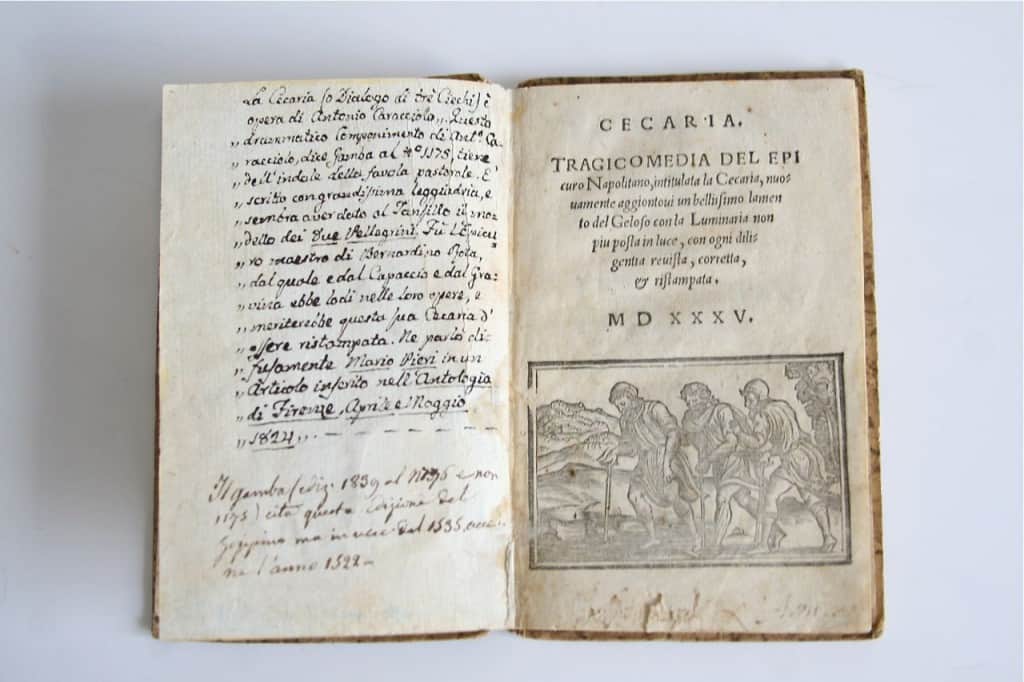October 10, 2011
PRINTED 1535: EXCEEDINGLY RARE DIALOG OF THE THREE BLIND MEN
THE STORY OF THREE BLIND LOVERS WHO CONSULT A WOODLAND ORACLE
EARLY AND INFLUENTIAL ITALIAN RENAISSANCE DRAMATIC LITERATURE
2 WOODCUTS OF THE STAGGERING BLIND MEN
.
The Book:
Antonio, Marsi. Cecaria : Tragicomedia del Epicura Napolitano [pseud.], intitulata la Cecaria, nuouamente aggiontoui un bellissimo lamento del Geloso con la Luminaria nõ piu posta in luce, con ogni diligentia reuista, corretta, & ristampata. Colophon: [Stampata in Vinegia per Nicolo d’Aristotile detto Zoppino … MDXXXV. (1535)] Woodcut illus. on t.-p. and p. [44]; printer’s mark on p. [61]. Collation: COMPLETE. [61] p. : 2 illus (of the Three Bling Men as depicted), 1 repeat; 15 cm., t.p. with minor wear at lower margin, some toning and occasional light staining.; c. 19th cen. Italian marbled pasteboards with wear and some loss to spine. The verso of the last flyleaf contains a (likely original) Italian sonnet worthy of further study, possibly, as has been suggested, a manuscript section of an Opera libretto by Alessandro Stradella ( 1639-1682). It should be noted that passages of the Cecaria were traditionally set to music and sung. Extremely Rare at auction; no copies appear in the ABPC and the last copy of this or any edition in the records sold at Sotheby’s Feb. 3, 1947, presumably the Langley Park copy. [SOLD]
Epicuro’s Cecaria (1525) is largely the story of three blind lovers who go to consult a woodland oracle about their destiny. This dramatic eclogue found its way directly into passages Garcilaso de la Vega’s Eclogue I. As the most influential poet to introduce Italian Renaissance verse forms to Spain, Garcilaso de la Vega’s reliance on Epicuro’s Cecaria stands as a clear example of the international reach and influence of early 16th century Italian dramatic literature.


